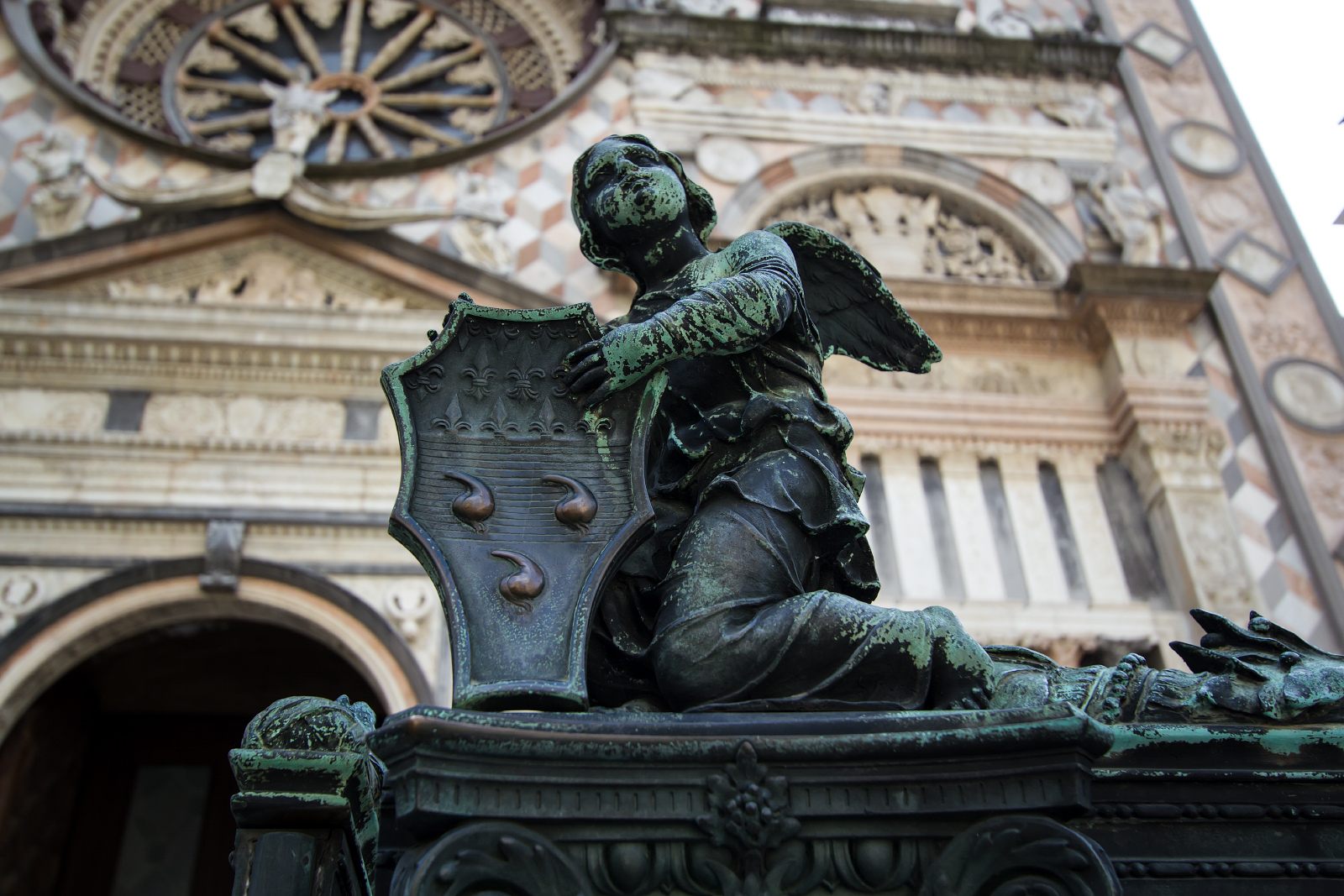In Heraldry, Hearts Can Symbolize Everything From Lily Pads to Testicles
Love, schmove.

For about as long as heraldry has been around, the heart symbol has been a common feature on coats of arms and other armorial bearings. The earliest examples date back to the Middle Ages. “You can find [hearts on] ancient arms back when there were actual heralds going from shire to shire, recording arms from people who had themselves either adopted or created [their own coats of arms],” says David Robert Wooten, the executive director of the American College of Heraldry.
The exact meaning of any single symbol on a coat of arms can vary widely. These are symbols, after all, that were created for very specific people or families. “A hundred years from now, that meaning will be completely lost, and only the person in that family and the persons in his immediate family would have known what was intended,” Wooten says. One exception to this, however, are canting (or punning) arms, which are designed to act as a sort of visual play on a family name. For instance, a coat of arms for someone named Hartford might feature a heart above water, literally fording a river.

When hearts are employed, as they often are, they can absolutely stand for the sorts of ideas we might expect them to today: love, loyalty, fealty, kindness, and the like. They can also carry a religious connotation, say when they’re depicted surrounded by flames or thorns. But in some instances, a heart can also represent concepts that are a far cry from feelings of kindness and love. Maybe the most famous instance of this alternate symbology is the use of hearts in the coat of arms of Denmark. One feature of its design is a portion featuring a trio of blue lions surrounded by red hearts (pictured above). Here, the hearts are in fact thought to represent lily pads.
In Denmark, these symbols are often referred to as “søblade” or “sea leaves,” and in the abstract, the shape of a lily pad is similar to the classic heart. Still, Wooten believes that even if this was one intended meaning, the hearts would also have carried their more traditional meaning as well. “You could say it’s a lily pad, but it’s red and it’s shaped like that, so the intent is that it’s a heart more than anything else.”
Depicting hearts in alternate configurations, to subtly change their meaning, is even more common. Instead of a regular heart, with the scalloped bumps at the top and the point at the bottom, there are many cases where the shape has been repurposed. Among the ways Wooten says he’s seen hearts incorporated into other symbols include as the hand basket of a sword, the end of a key, as an arrowhead, and as the leaves of a shamrock or trefoil.

Famously, the coat of arms of the 15th century Italian military leader Bartolomeo Colleoni includes three upside-down hearts. Historically however, it’s believed these are meant to symbolize pairs of testicles. This coat was likely an example of punning arms, with Colleoni sounding remarkably close to the Italian word “coglioni,” meaning “testicles.” In life, Colleoni was also rumored to have three balls. “Obviously it didn’t spread too far and wide, otherwise, we’d see a lot of testicular hearts out there,” says Wooten
Thanks to their instant recognizability and infinite symbolic malleability, hearts are one of the most used symbols in heraldry, and they aren’t likely to disappear any time soon. “It’s not for ownership of an item, or bravery in battle, or anything else, it’s for love of family, love of God, love of whatever, so it’s an easy thing to insert into and commonly express,” says Wooten. Also, testicles.








Follow us on Twitter to get the latest on the world's hidden wonders.
Like us on Facebook to get the latest on the world's hidden wonders.
Follow us on Twitter Like us on Facebook